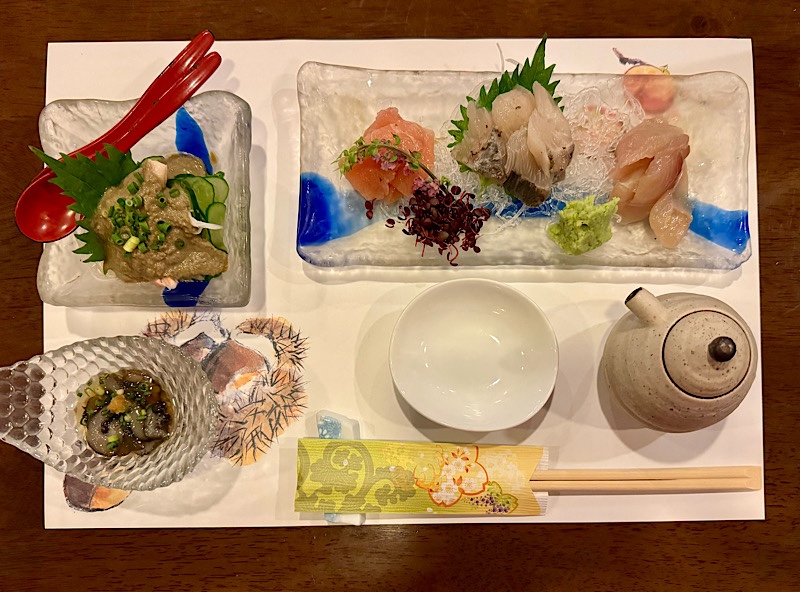Time to say farewell to our gorgeous onsen suite and start the trek home. Japan is only a 9 hour flight so it doesn’t feel as never ending as a Europe or US transit, thank fuck! The end of a trip is always kinda sad, but I’m always so grateful to have been able to come and see these gorgeous towns and the beautiful scenery and enjoy the lovely food and the break from the usual routine.
As we are packing, Mr K says to me: ‘You could stay a little longer if you want to…’ Fuck! Now he tells me! Maybe next time I totally should, I could see myself tootling around another couple of ryokans or tootling about with the Messrs Stokes who are in Kyoto. Oh well, too late to change plans now.
We had a few errands lined up to deal with on the way from Hakone to Haneda, but it should be a pretty chill day hopefully – only about a 90 min drive and one we’ve done before. So fingers crossed everything goes smoothly. First to Odawara to the nearest Donki to try and find some weirdnesses to add to this year’s Christmas gifting. 🙂


Sorry, SirLee – I don’t have you in the Christmas draw this year or I would have bought a couple of bottles of ridiculously cheap whiskey. I do have one of my nieces though…. 😀 Vanilla caramel spermatozoons! What’s not to love? They even promise to make you look great on social media! 🙂


I just… what? I’ve forgotten what shopping in Japan is like.

Total retail regret: should have bought this strange strawberry heart shaped pillow home with me; even though it would have been a struggle to fit it in the luggage somewhere. 😉 It was super cute and very Japan.

I’ve been out of the cities for too long… everything feels like an assault on the senses. From the traffic lights talking to me, to the escalators and their musical singing/warnings, to just walking past some random Hello Kitty machine that is nattering in an overly kawaii voice trying to get us to buy popcorn! Argh! Take me back to the peace and quiet of the onsen towns.

Our drive to Haneda Gardens was marked by one traffic jam after another. Like seriously, our 90 min drive turned into more like 3 hours plus, in total. Once we got onto the interchanges is when the fun started… the fuel light came on in the car, and both of us really needing a Happy Room! With 27kms to drive, and the car saying we had about 36kms worth of fuel, we were desperately looking for a petrol station. Lord knows the Happy Room was likely going to be out of the question, we had passed numerous konbini before we hit the interchanges but then there was nothing but noise barriers fencing us in. If we left the highway, we could have been driving around for ages looking for fuel, and this close to the city, konbinis with car parks gets to be few and far between.
We managed to limp all the way to Haneda and turn off where we needed to on the sniff of an oily rag… range anxiety was relieved when we found a fuel station (fortuitously the one closest to our car hire return place later!), and very unexpectedly – they had a Happy Room for customers (most petrol stations here do not). Feeling much happier in spite of our 90min turned 180min drive, we made our way to Haneda Gardens to meet Yale for some late lunch before we could return the car and go check in.
When we got there – we were surprised by a show of super cars in the car park! Wow! There’s some serious money here!













Inside was an even more choice selection of fancy cars inside.




But no time to dilly dally, it’s now 3pm and sushi lunch was waiting. Favourite Haneda Gardens sushi restaurant inserted here so I can find it for next time we are in need of a sushi fix before heading to the airport!. Tsukiji Sushiko Takumi… I won’t ever remember that!

Yale chose the Uber plate of all the things.

I tried the All Tuna All the Ways nigiri platter…

Mr K had his favourite tempura donburi, and a savoury steam custard with roe and smelt and all good things.


Several beers and a good catch up later and we were soon ready to repack some final things and make our way to the airport for the overnight flight home. Mr K dropped us to the airport and then took the car back, and met us back on the concourse.
We front up to the Business check in, and I ask the lady if Yale’s business upgrade request had been successful – and sadly it had not been. So we checked our bags (three of them: 2 x 25kgs and 1 x 10kg bag), in what must be our lightest ever return from Japan. Mr K then asked the lovely staff member if he could take home a bottle of Moët & Chandon champagne that we never got around to drinking because there is so much affordable quality saké everywhere… unsurprising that! Sadly, and very predictably, she said it would be taken off us at security, so he handed it to her with a flourish and said, “Happy Birthday, we hope you enjoy this!” And off we went towards security and the JAL lounges.
Security turned into a trial… I’m rolling my eyes here, but here is a actual copy of a text I sent to a friend while waiting for the guys to sort their shit:
”Oh my god… I can’t transit with these two ADHD squirrel-brained fuckers at the same time! 😵
One had a 500ml can of 196 in his carry-on so they pulled him out of the line… while he simultaneously misplaced his smart watch and had to hunt through hand luggage that looked like it was packed by a bipolar raccoon to find where he’d stashed the damned thing barely two minutes earlier! The other had six very teeny (but very stabby!) steel souvenir forks in his backpack 🙄 and we had to wait another five minutes while he rifled though that backpack which also looked like it was packed by some sort of escaped rabid lab monkey! And I’m sitting there thinking, “Seriously MFers?!” 😐 I’m the one with the titanium knee and the only one not causing dramas at security!”
Preserved for posterity!
The JAL First Class Lounge was busy, and not as calm or as nice as the one at Narita… but we no complain: saké on tap and sushi delivered to your table (though I was no longer hungry after the tuna on tuna platter earlier. It had been an unexpectedly warm day, so showers and cool drinks were much appreciated no matter what. The lounge is very stylish in a Japan meets Scandinavian minimalism kinda way.



I loved this wall near the shower corridors… it’s covered in nails and each nail has a round token hanging from it creating a design that is obviously Fuji in JAL colours.


Damn, forgot to photograph the hair dryer. 😉
Yale managed to try most of the menu… I was just keen to rehydrate and get ready to take some drugs and hopefully sleep the night away.


So, being in the lounge getting ready to fly home, of course my mind was wandering to the next trip… and I don’t mean the cruise to NZ in January (or the weekend popover to Auckland next weekend), I mean, we are back in Japan next May for the Transport and Mobility expo at Osaka 2025. I’m hoping to tack on a few days in Hokkaido, as Mr K is keen to sus out the integrated transport options for the Shinkansen between Hakodate and Aomori. Anyway… got me wondering what the mascot for Hokkaido was… and it’s this strange ‘round moss head dude’ who is always depicted with a huge package! Marimakkori is his name. I feel like photographing him with small children is almost as bad as getting a pic of your kid with Pedo-Bear… oh wait, who would do that? Right, we would.

Big dong Marimakkori! Then I saw this cartoon of him and was wondering… are those? No, surely not!


Thankfully the translation proved it to be not as obscene as it could have been! But, Japan – you never know what to expect. Point in case*:


* I can neither confirm nor deny whether I may or may not have been the one who set his Messenger nick to that at some point on this trip. LOL.
Before too long, it was time to board, and Mr K and I went straight in with our Group 1 boarding fanciness. Sadly, Yale was in cattle having missed out on his upgrade. I felt so bad, all 5’ nothing of me in the front, and 6’9” of him in the back… but as I was walking down the gangway, I saw he was held up. The ladies at the boarding switched out his boarding pass and he was given the very last seat in the business cabin after all! I wonder if it was that bottle of Moët & Chandon that won the day! 🙂

Yale looking very happy with his unexpected and very last minute wash!


We were offered a late supper, which given I hadn’t eaten in the lounge was welcome – though I have to say, the quality of the Qantas Japanese set meal seems to have gone down from last year. I can’t honestly say if it’s just my impression because we have been eating fabulous and delicious kaiseki meals on this trip, or whether it really has slipped a bit. I know Qantas domestic meals have definitely been a bit on the ordinary since Vanessa took over, (and as a shareholder I heartily approve of cost cutting measures, but as a consumer of the product, I’m all like: “Fuck you!”), so it’s possible that it’s not as good as I recall.

Flight was uneventful, no stinky feet, no crying children, not even any snoring businessmen!

Early storms in Sydney caused delays for our flight, but we made it back to Brisbane by about midday… and were met with gloriously blue skies and 29°C at home.


Hopefully, I’ll find time for a nap, and then Hatsune Miku tonight! 🙂






































































































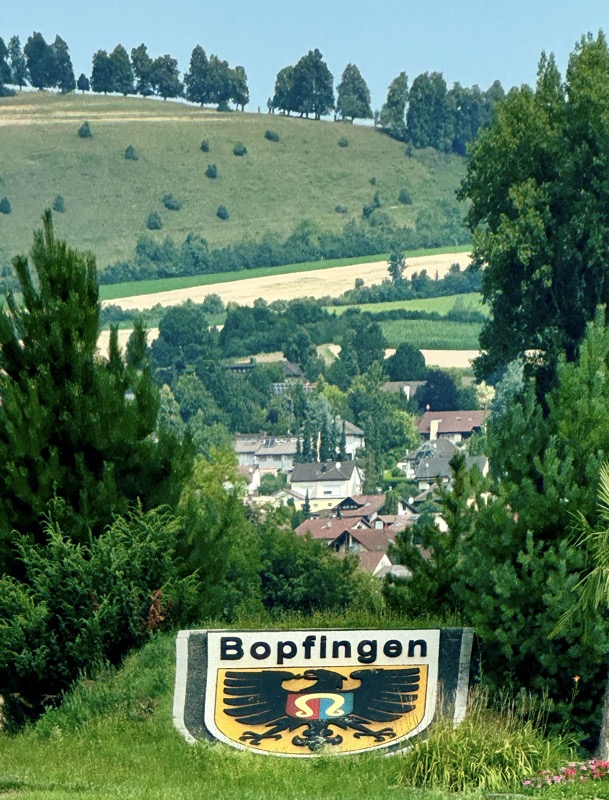
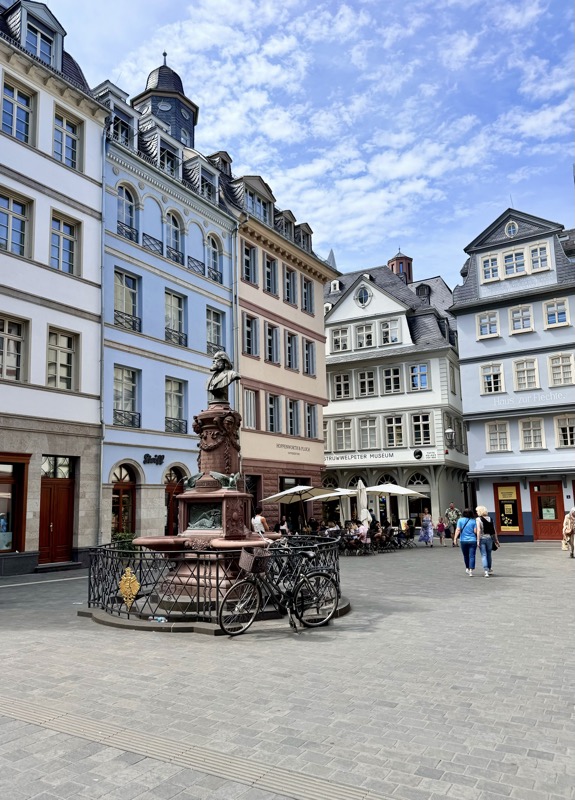
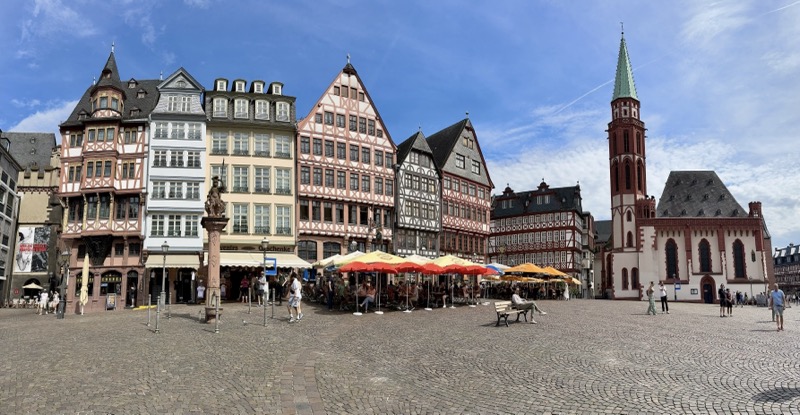
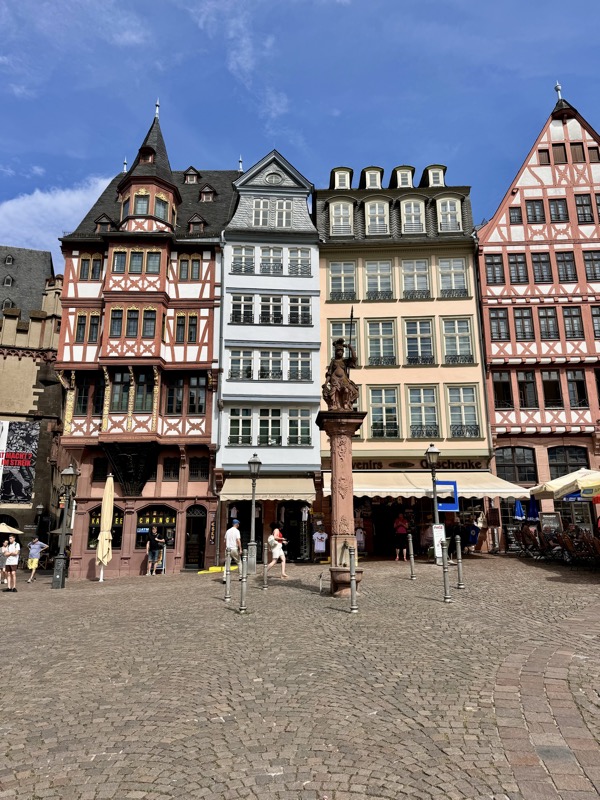
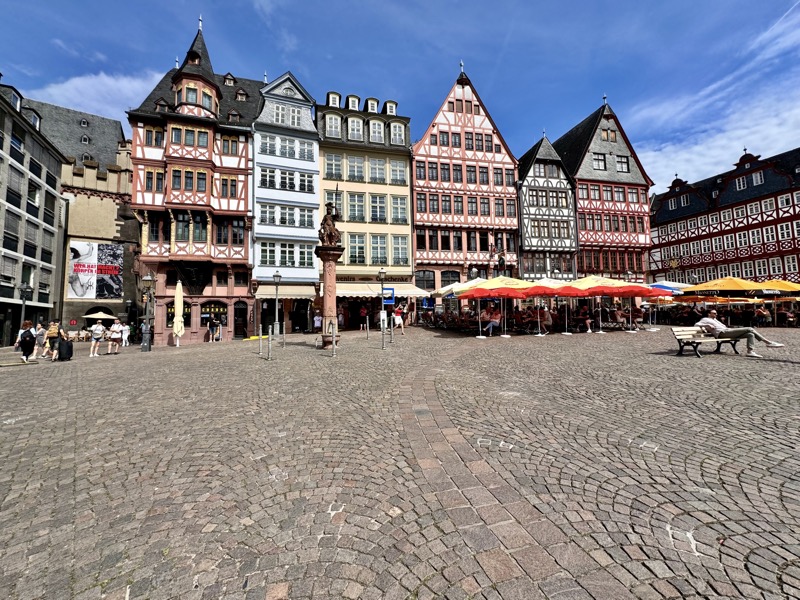
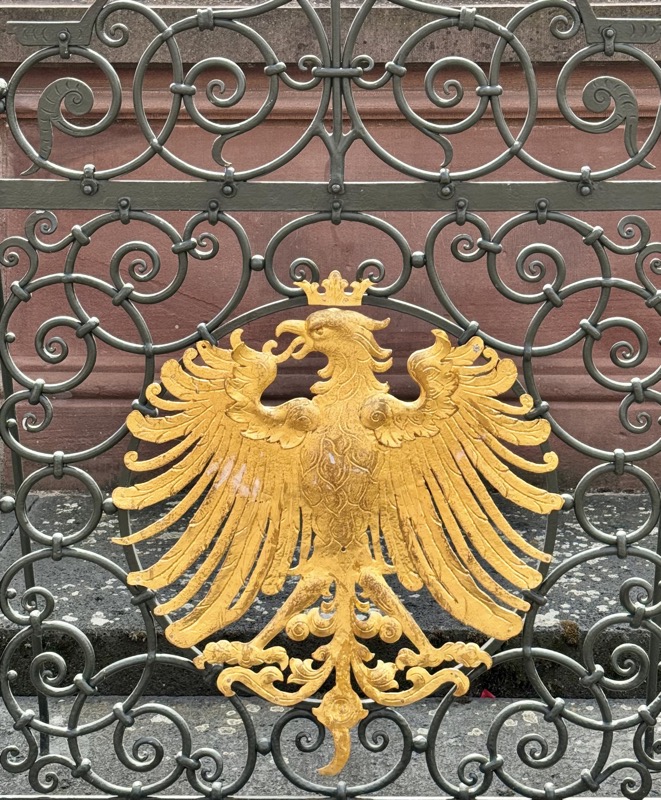
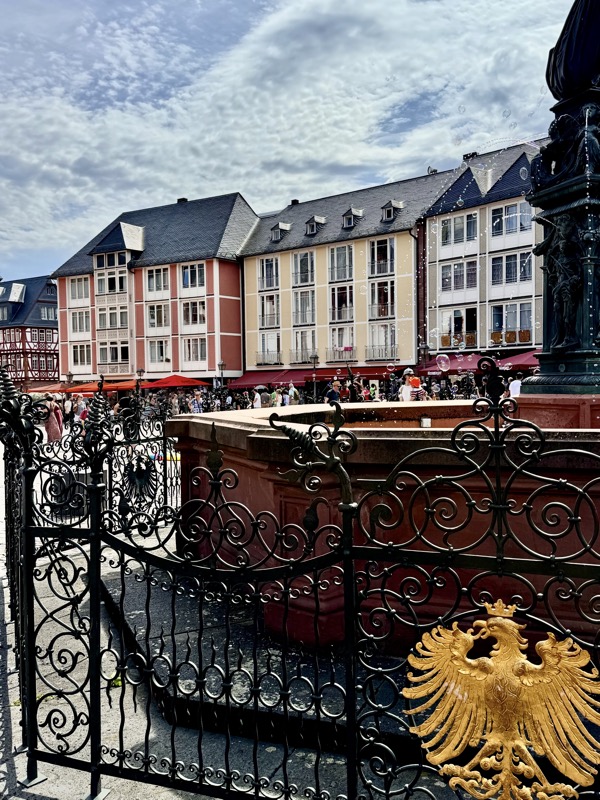
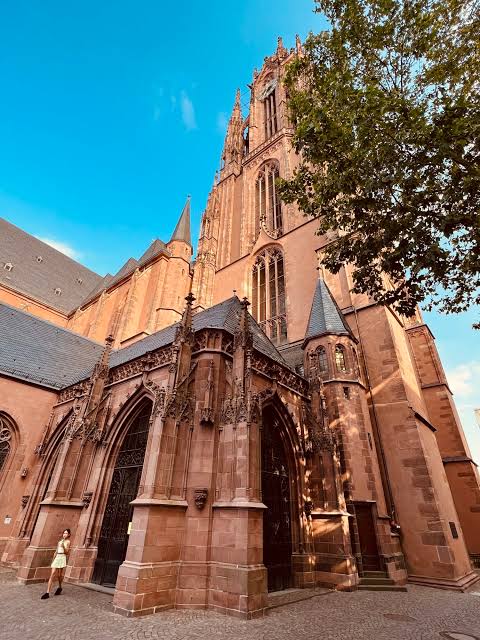
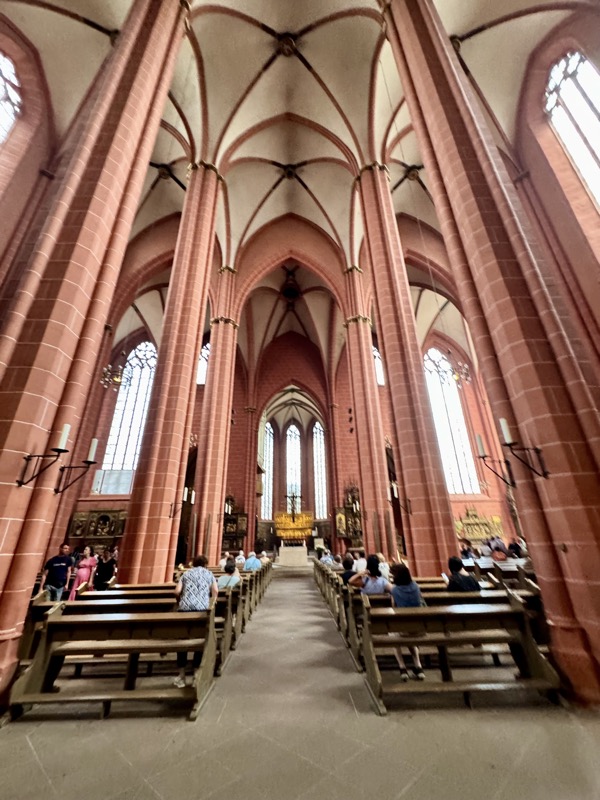
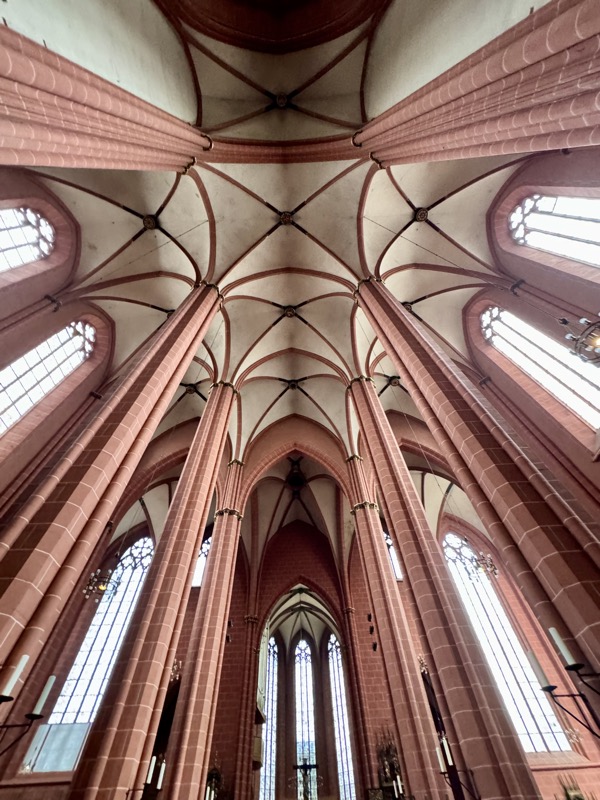
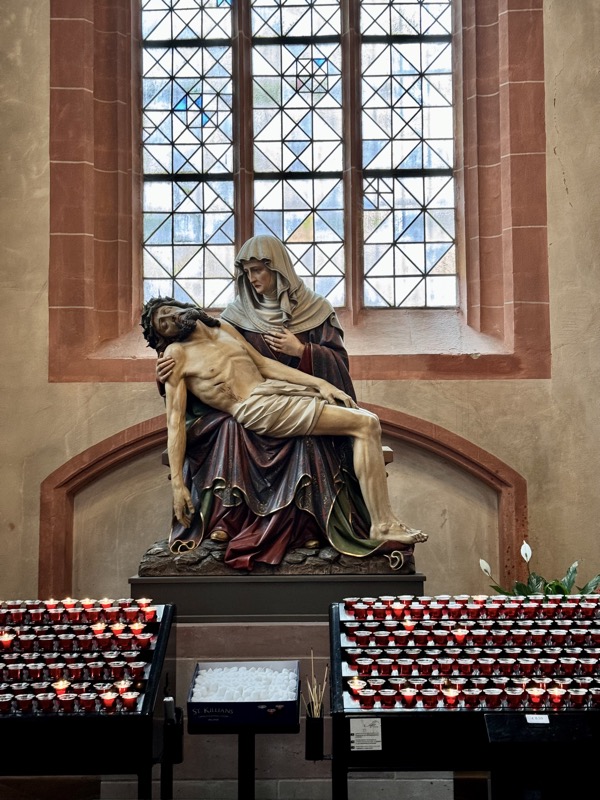
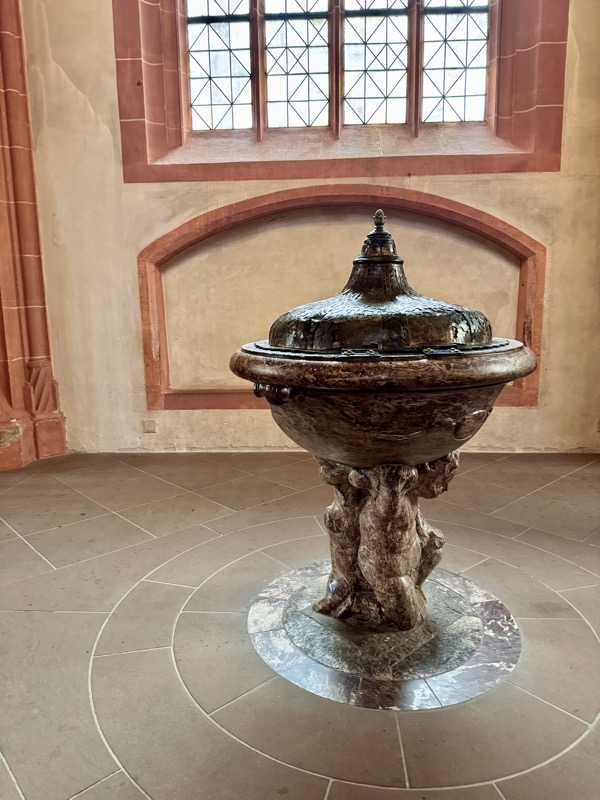
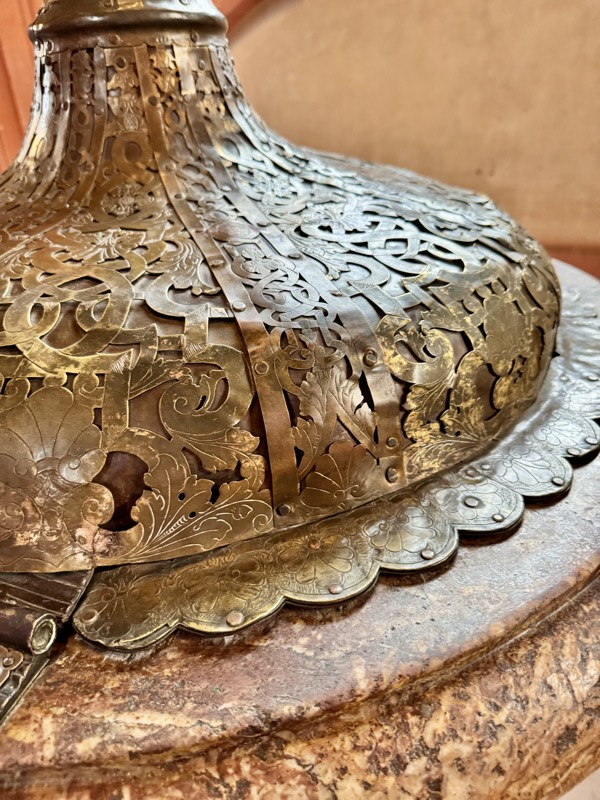
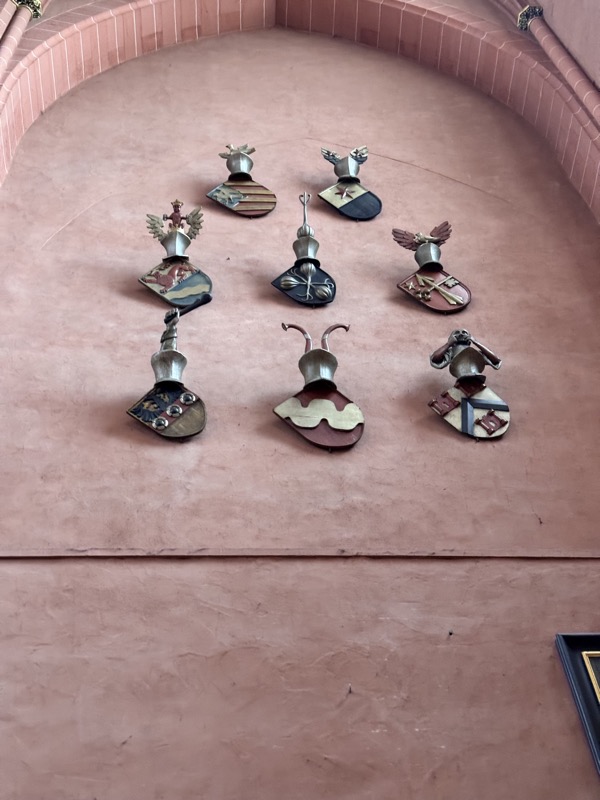
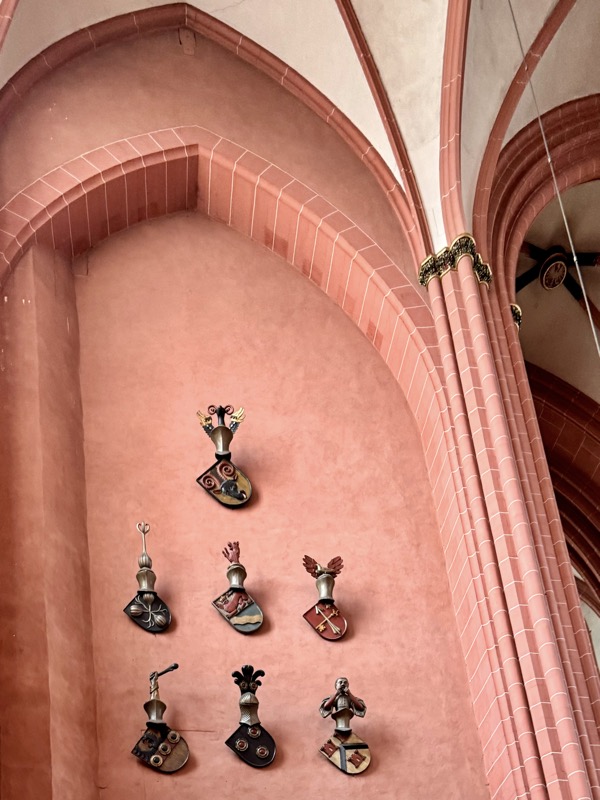
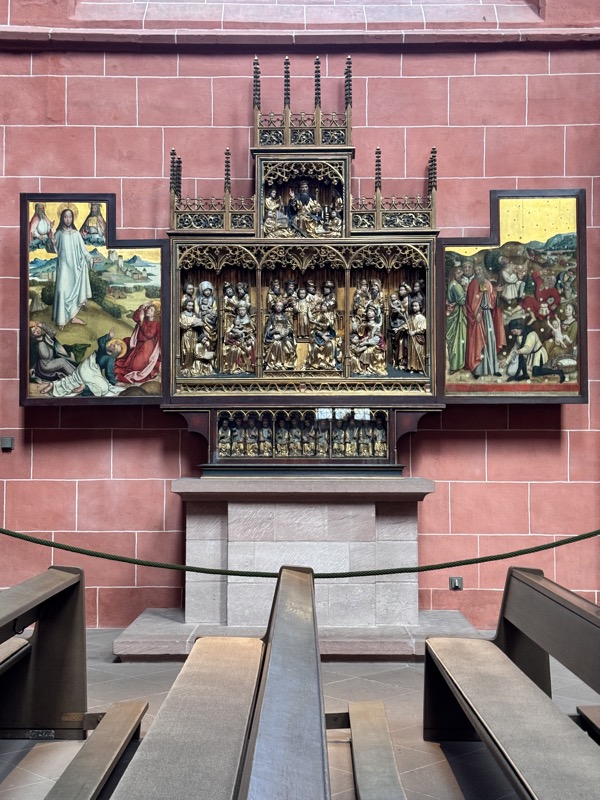
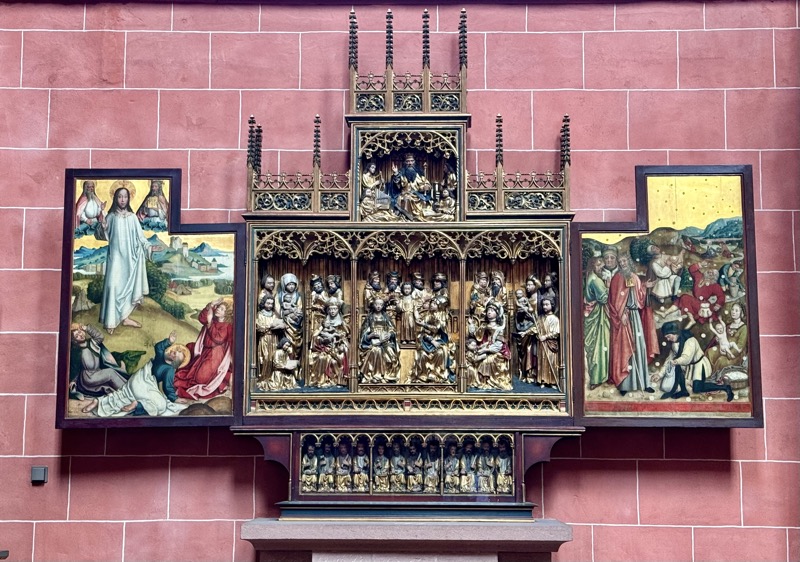
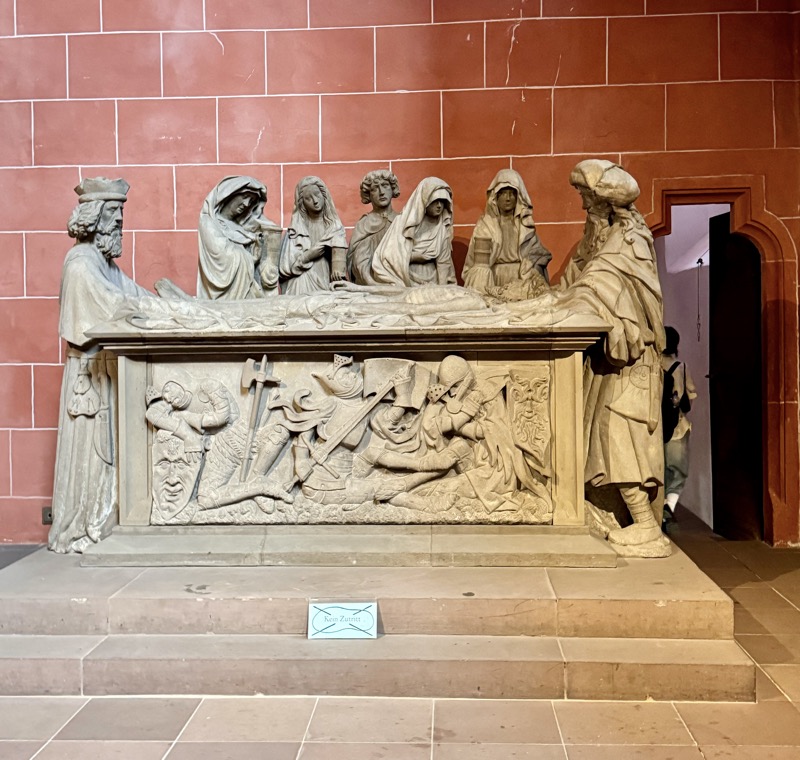
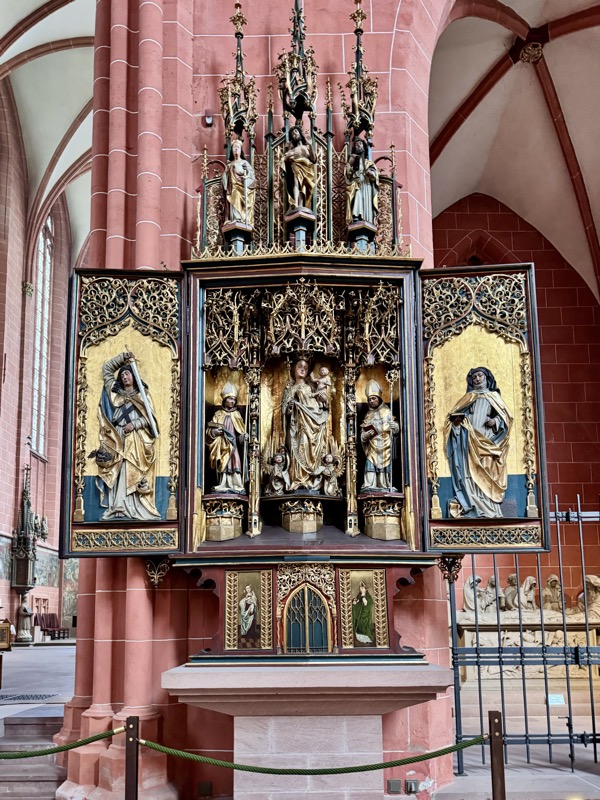
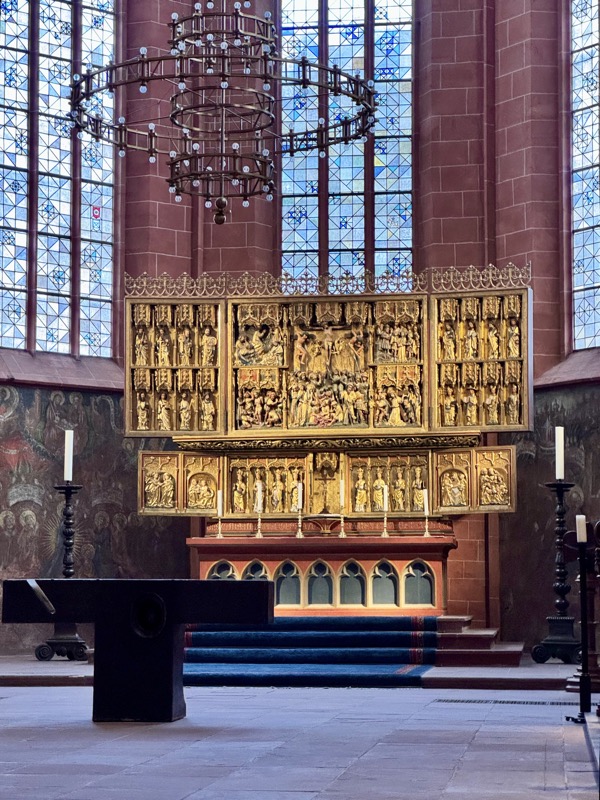
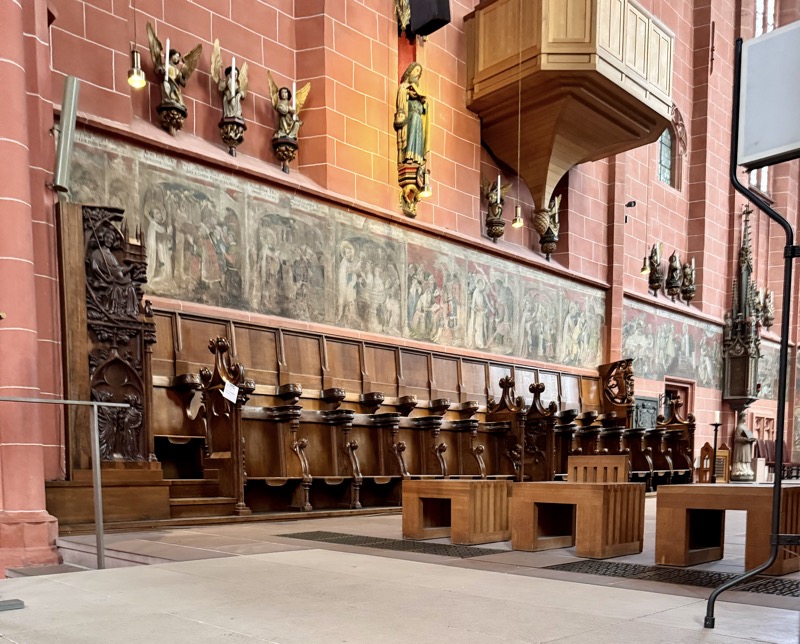
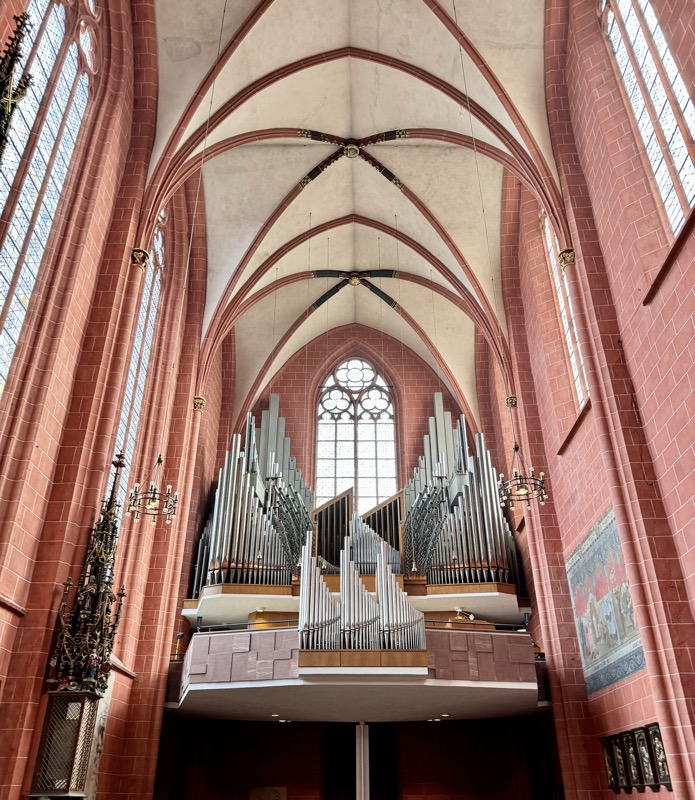
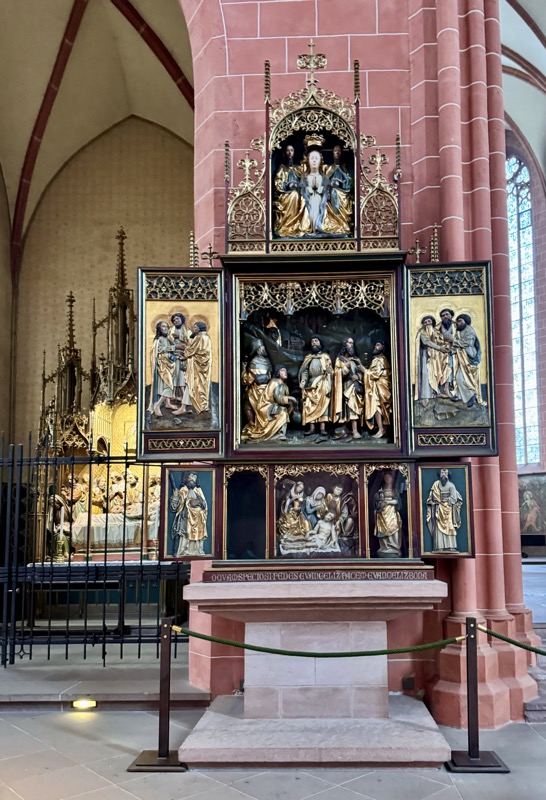
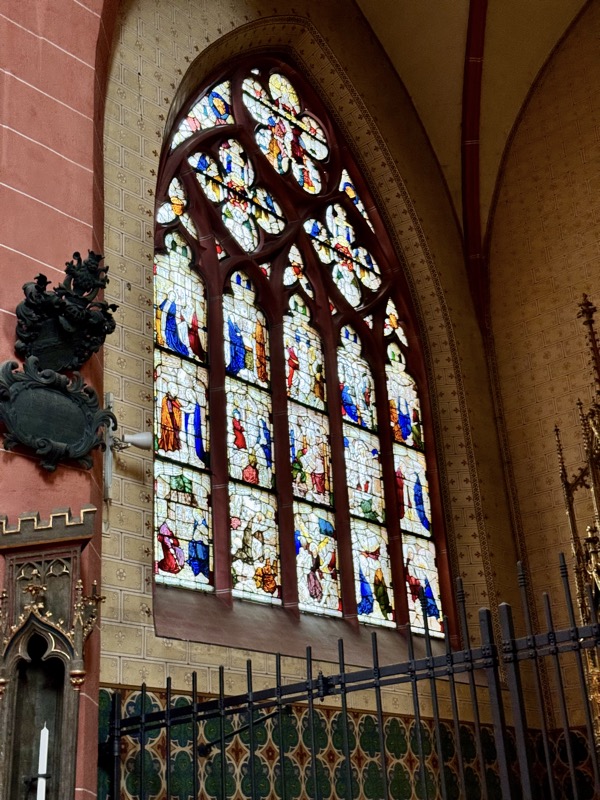
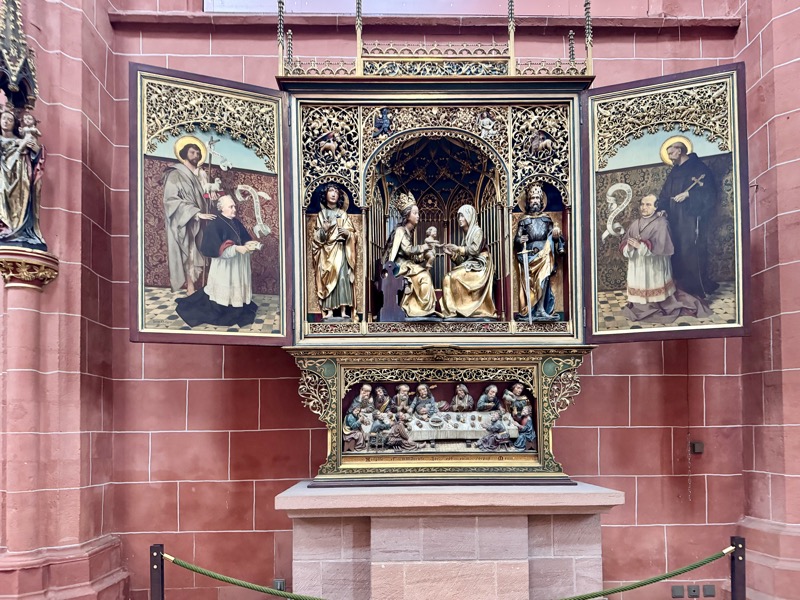
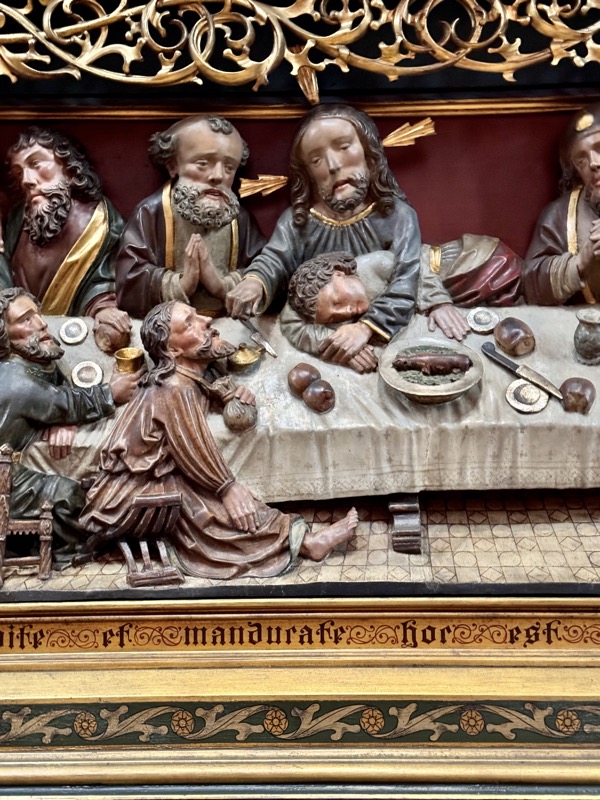
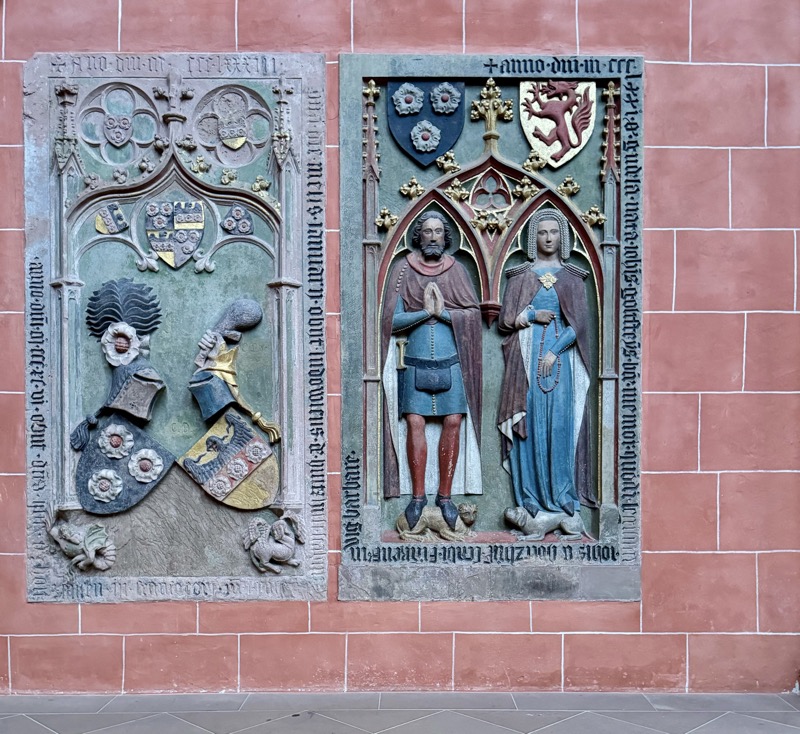
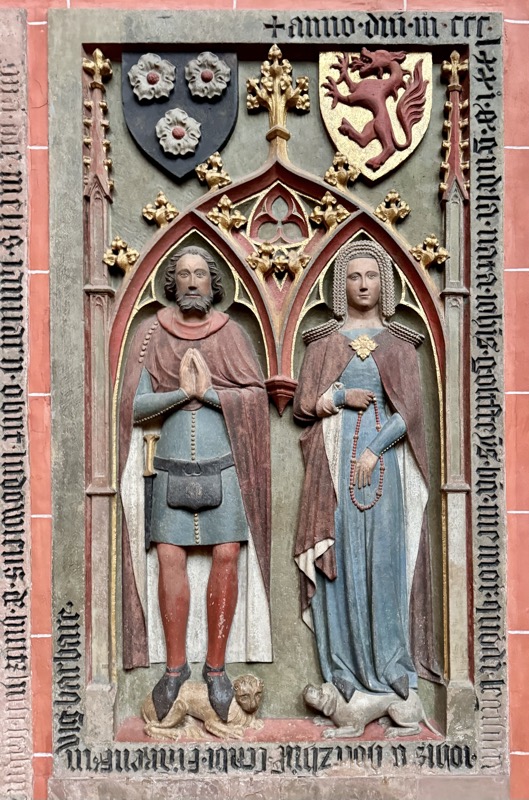
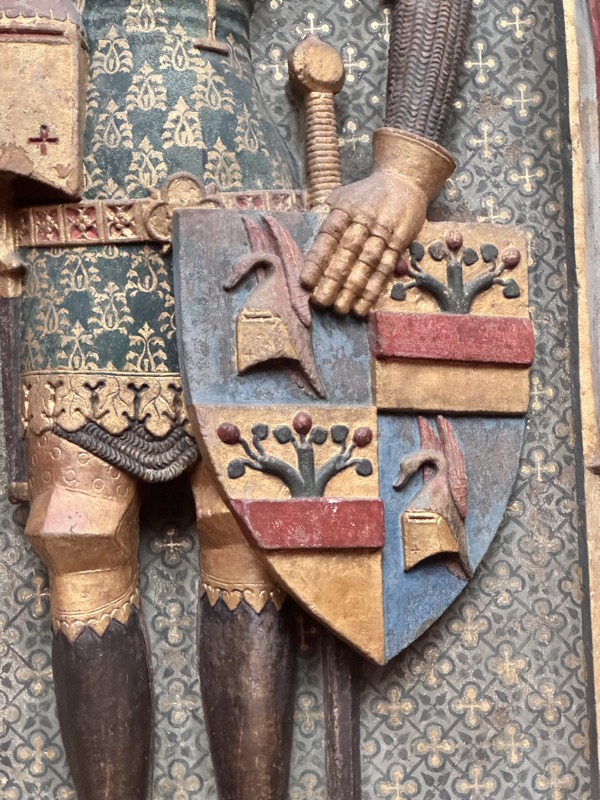
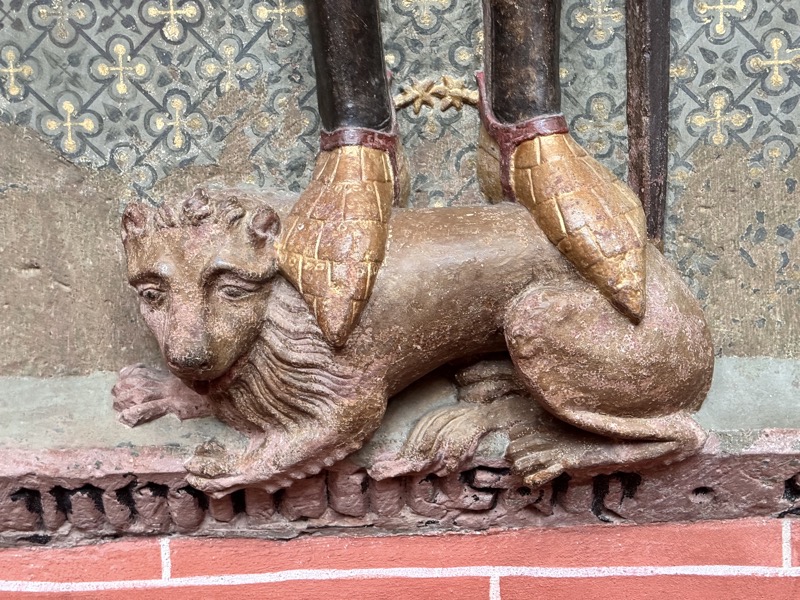
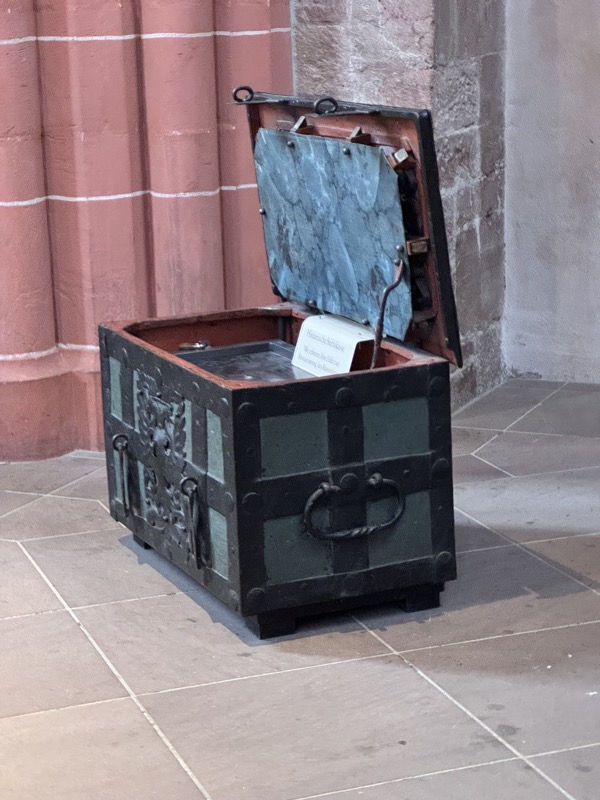
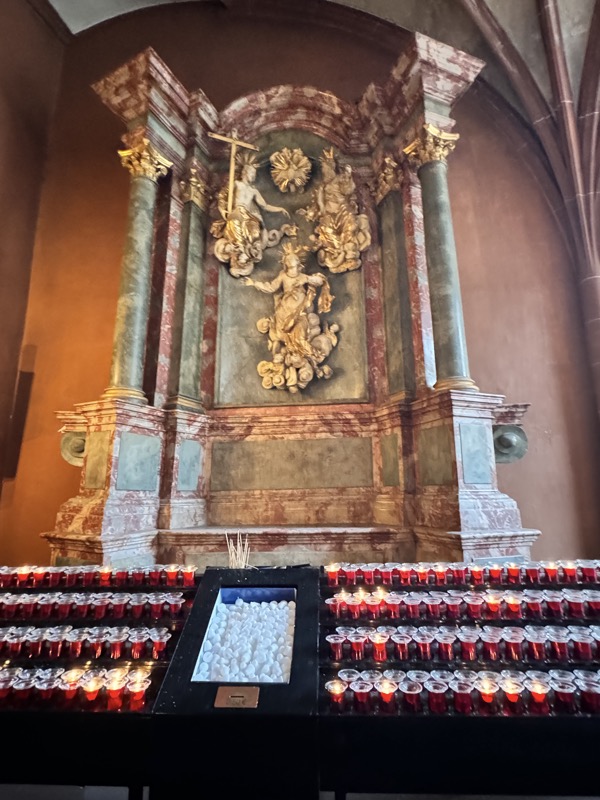
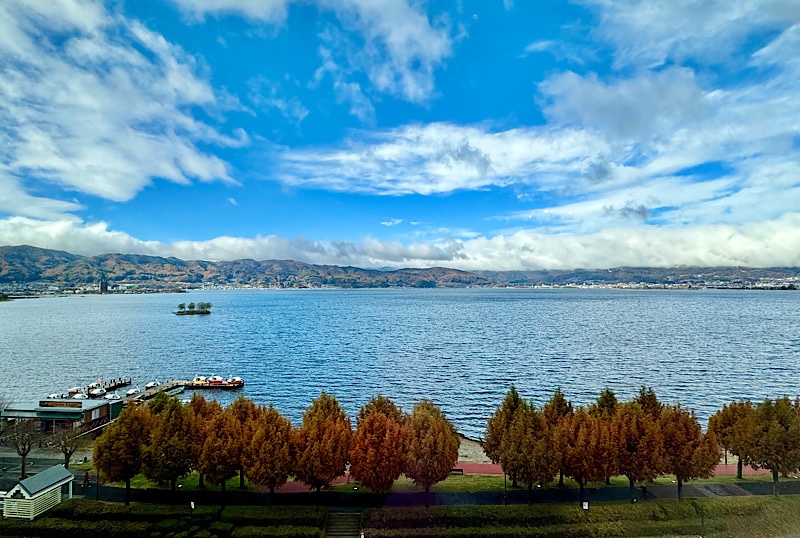 I had a feeling this gorgeous weather wasn’t going to last and it turned out I was absolutely right.
I had a feeling this gorgeous weather wasn’t going to last and it turned out I was absolutely right. 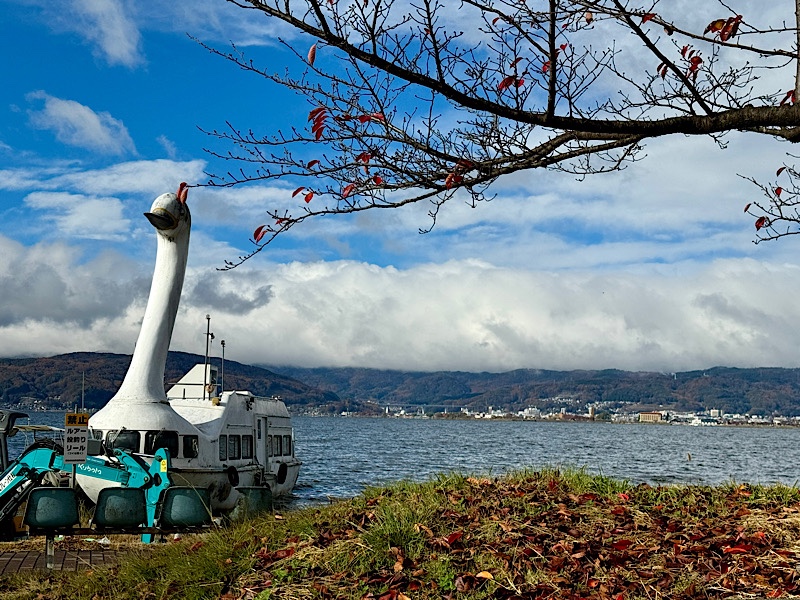
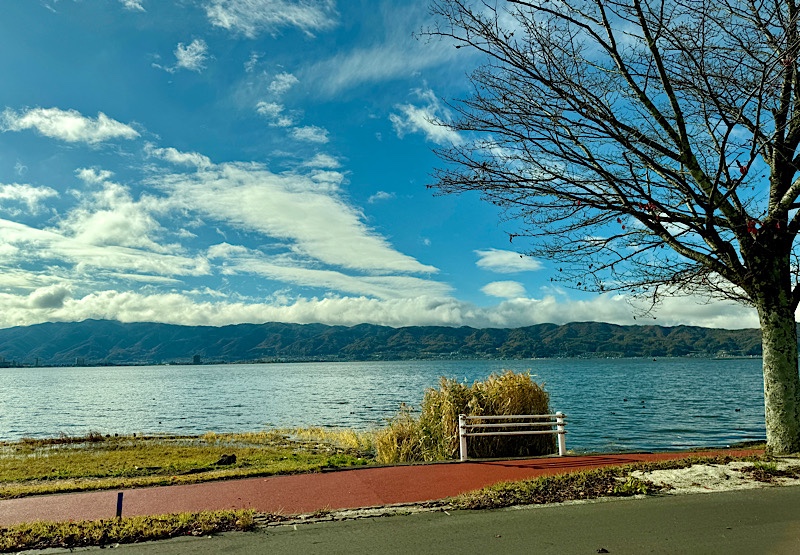
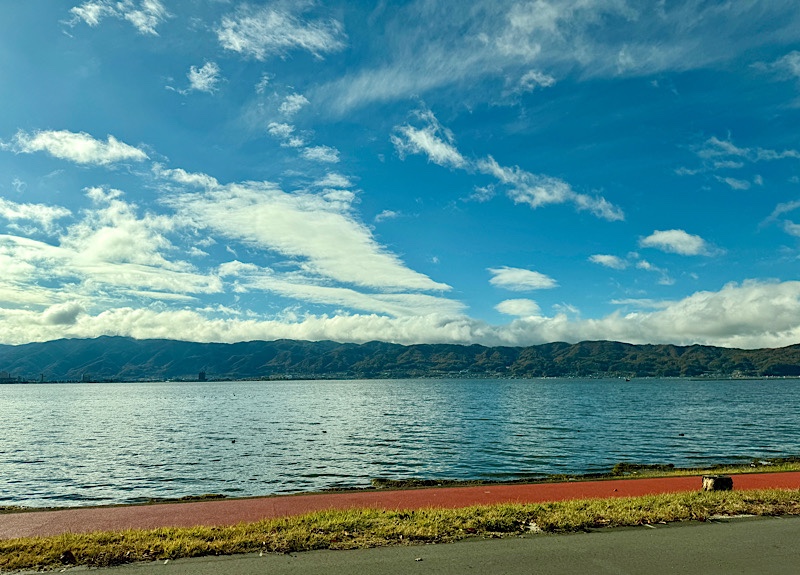
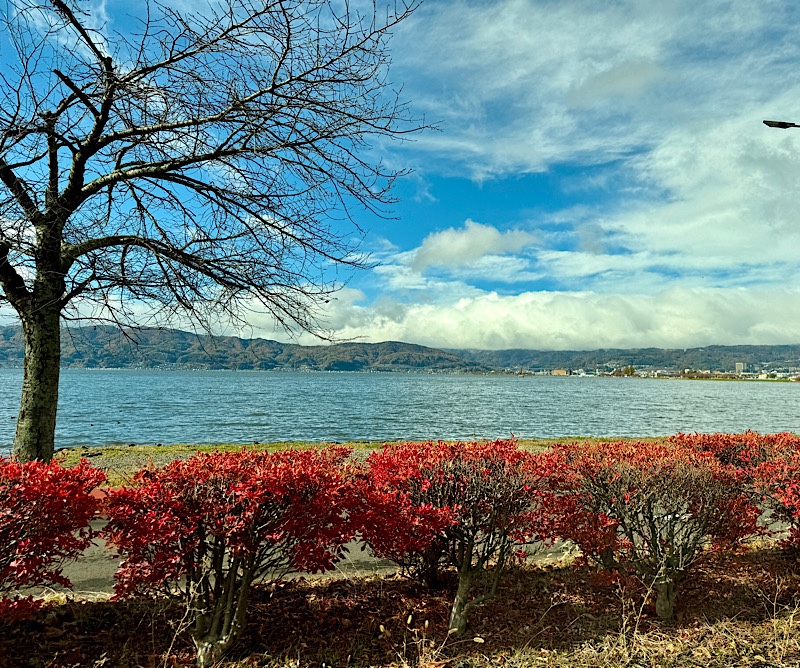
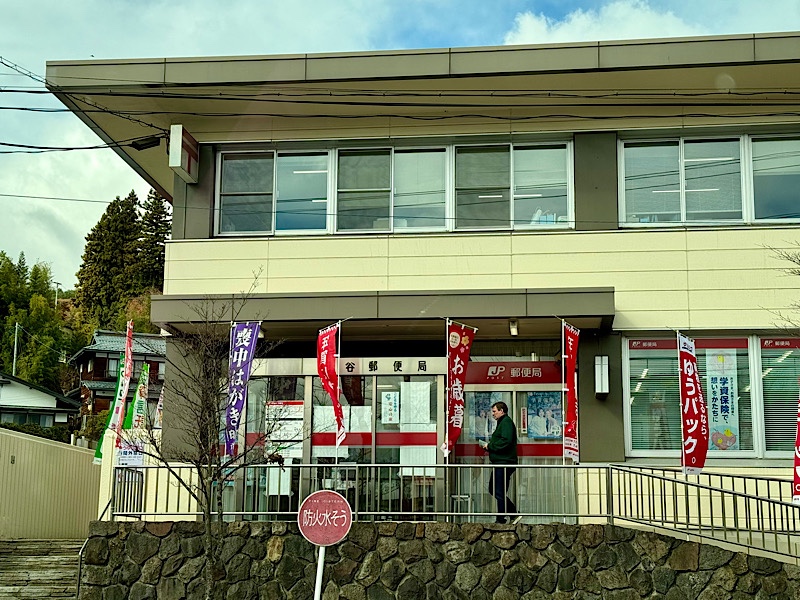 Me in the car: “There’s some snow on those mountains; I bet it’s chilly up there.” #famouslastwords
Me in the car: “There’s some snow on those mountains; I bet it’s chilly up there.” #famouslastwords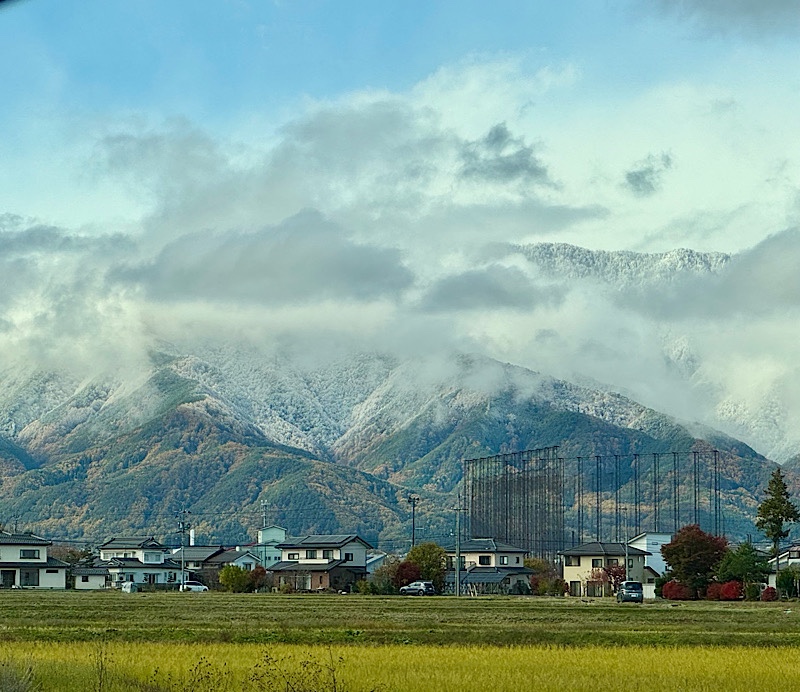
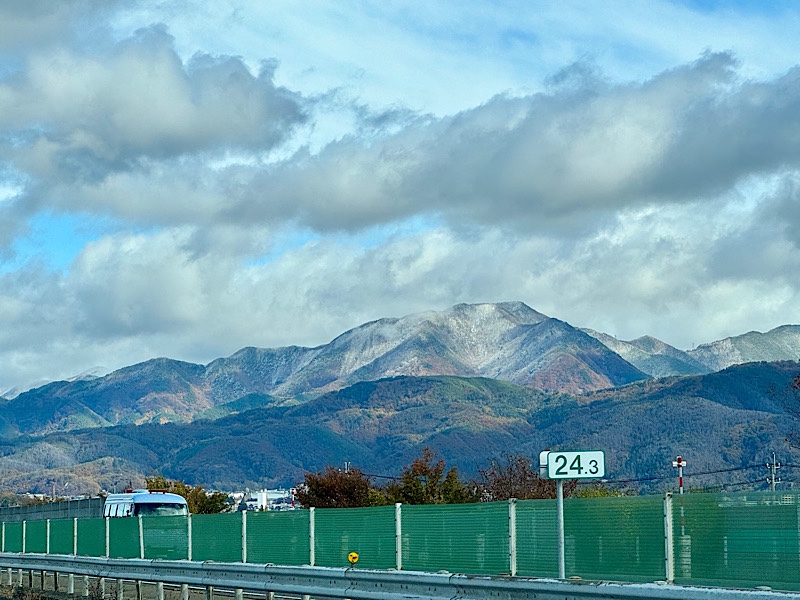 We have noticed that Sondora shows us the topographical /literal map of things and sometimes it looks like spaghetti junction, and no sooner does that happen than you get on a highway and it turns into a graphic representation of the destinations rather than a literal visual description (*think of a London Tube map compared to the A-Z).
We have noticed that Sondora shows us the topographical /literal map of things and sometimes it looks like spaghetti junction, and no sooner does that happen than you get on a highway and it turns into a graphic representation of the destinations rather than a literal visual description (*think of a London Tube map compared to the A-Z). 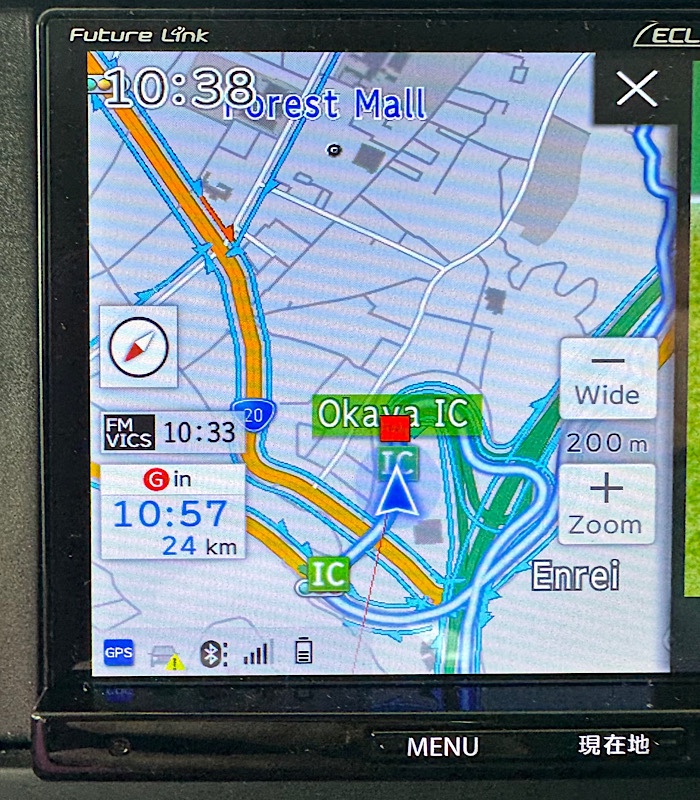
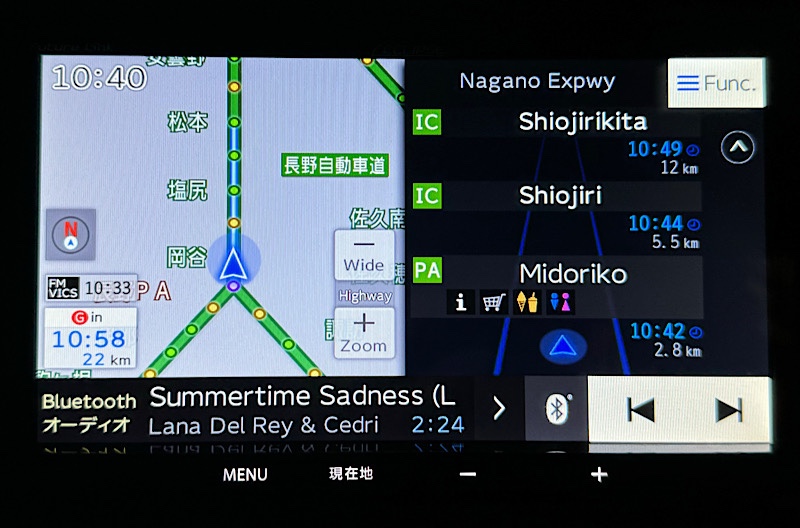
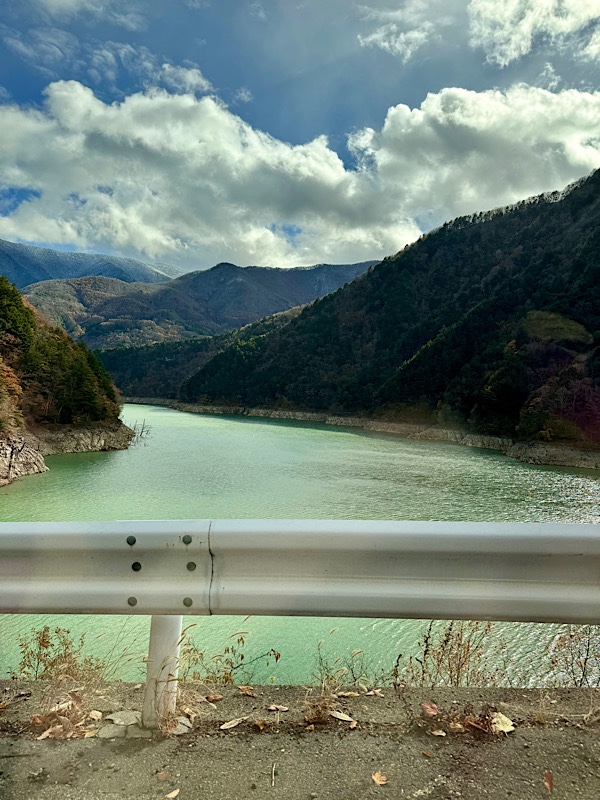 And then suddenly, it was fucking snowing! Mr K says he saw a monkey run across the road in front of us – but I think he was pulling my leg and just wanted to have one up on me.
And then suddenly, it was fucking snowing! Mr K says he saw a monkey run across the road in front of us – but I think he was pulling my leg and just wanted to have one up on me. 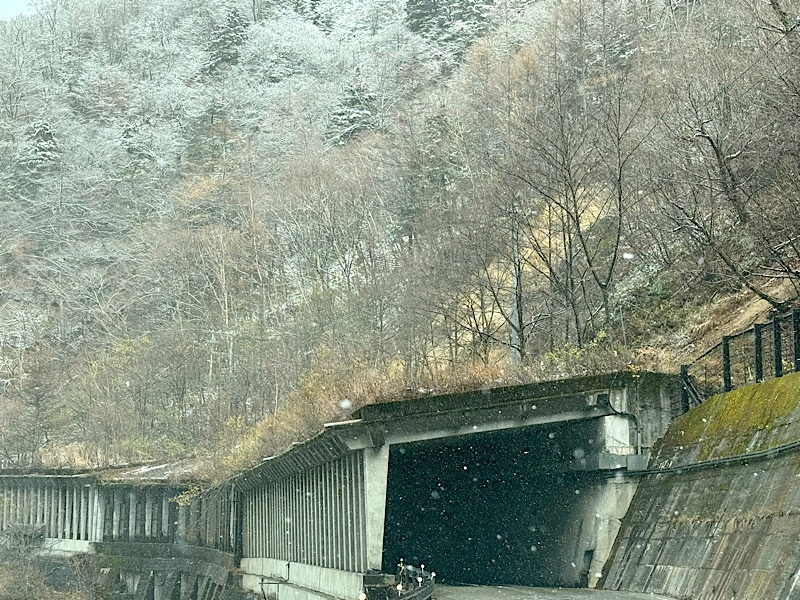 Beautiful!
Beautiful!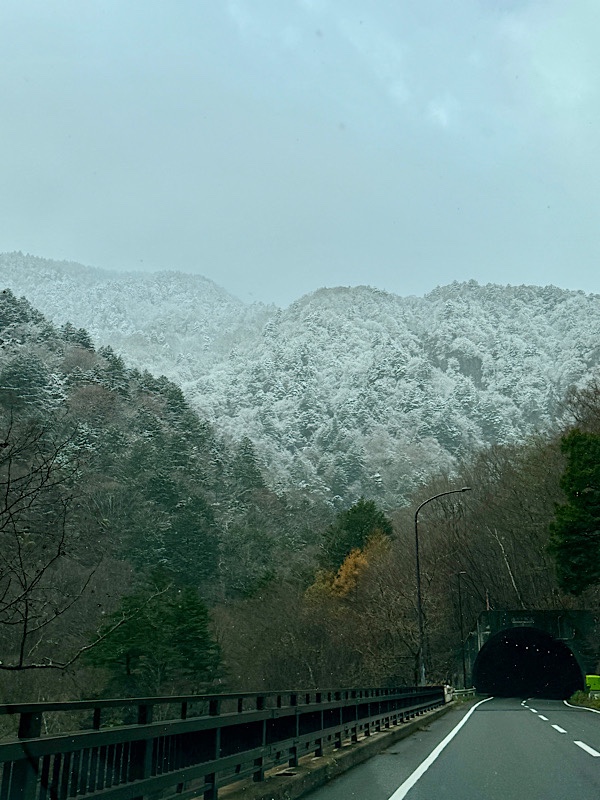 We noted that Sondara was showing some pretty spaghetti/worm like road maps coming up – just what you need when it is unseasonably and unexpectably snowing on what you thought might be a fairly uneventful drive.
We noted that Sondara was showing some pretty spaghetti/worm like road maps coming up – just what you need when it is unseasonably and unexpectably snowing on what you thought might be a fairly uneventful drive. 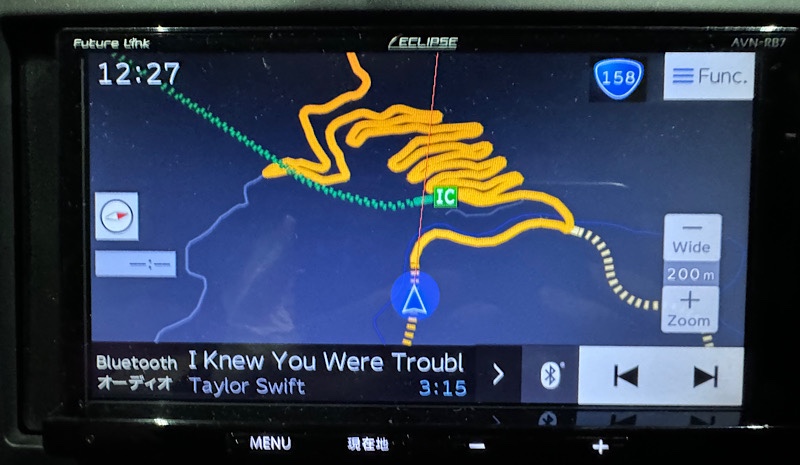 Then we came out of a tunnel and we were up in the mountains and it was a winter wonderland! OMG – so beautiful. I haven’t seen such gorgeous scenes since we did Christmas in Canada in 2017.
Then we came out of a tunnel and we were up in the mountains and it was a winter wonderland! OMG – so beautiful. I haven’t seen such gorgeous scenes since we did Christmas in Canada in 2017.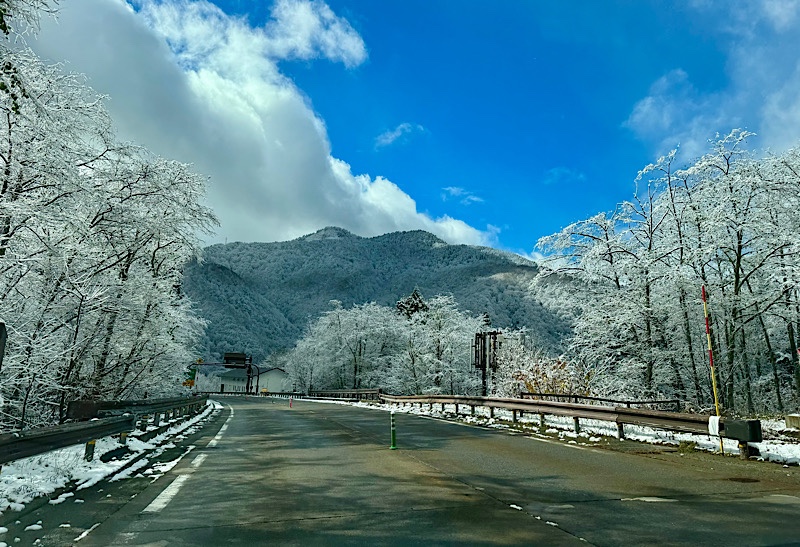 It was just so beautiful…
It was just so beautiful… 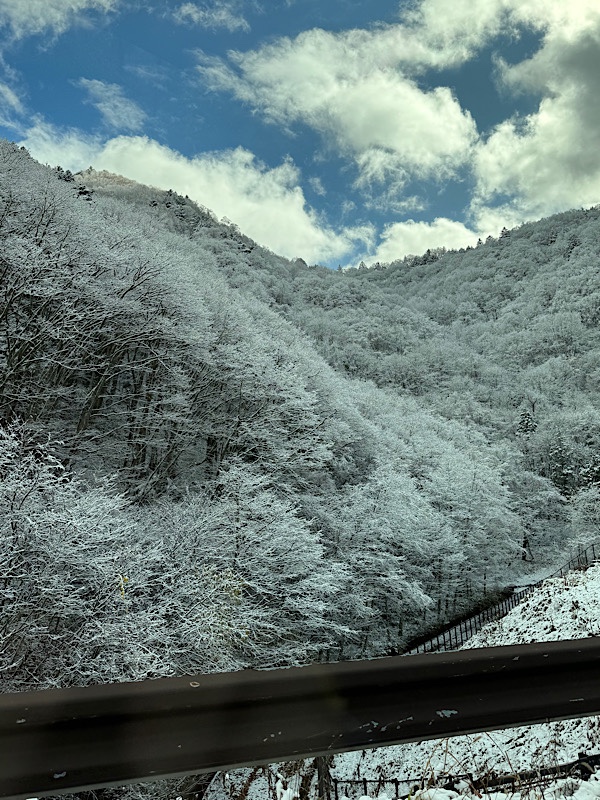
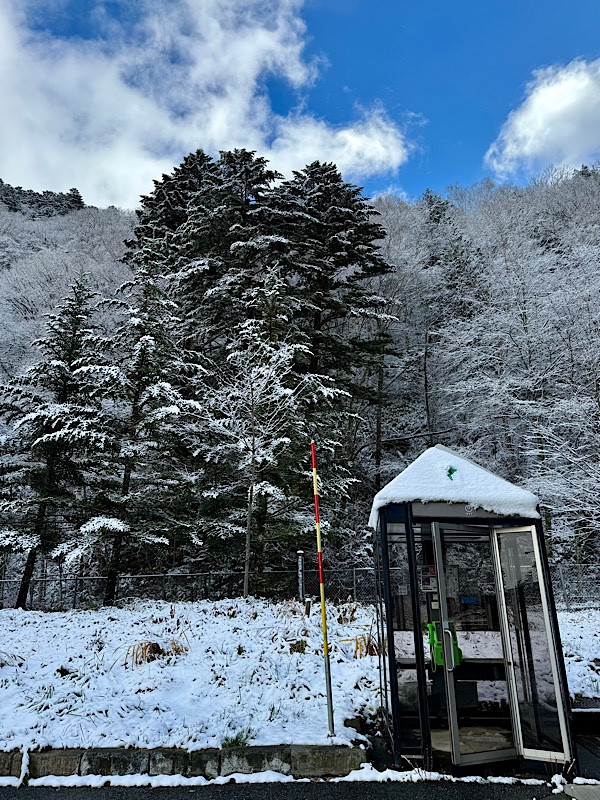
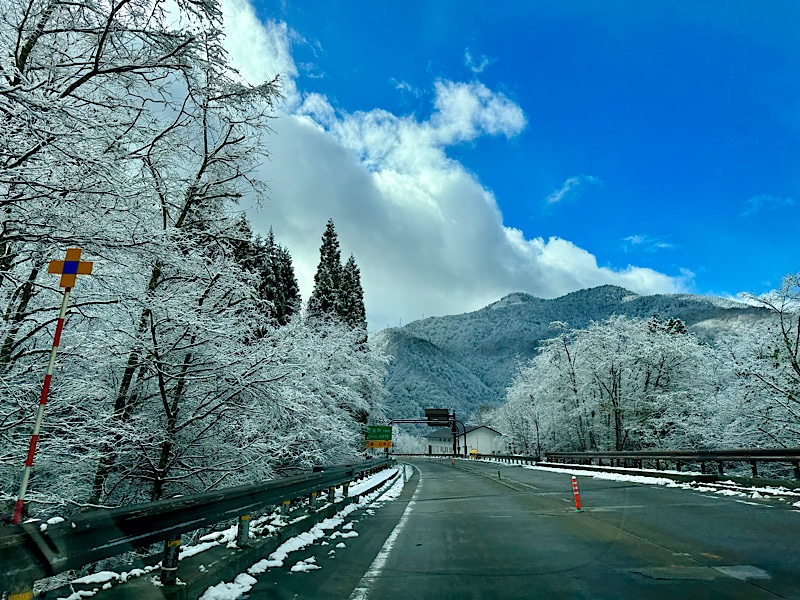
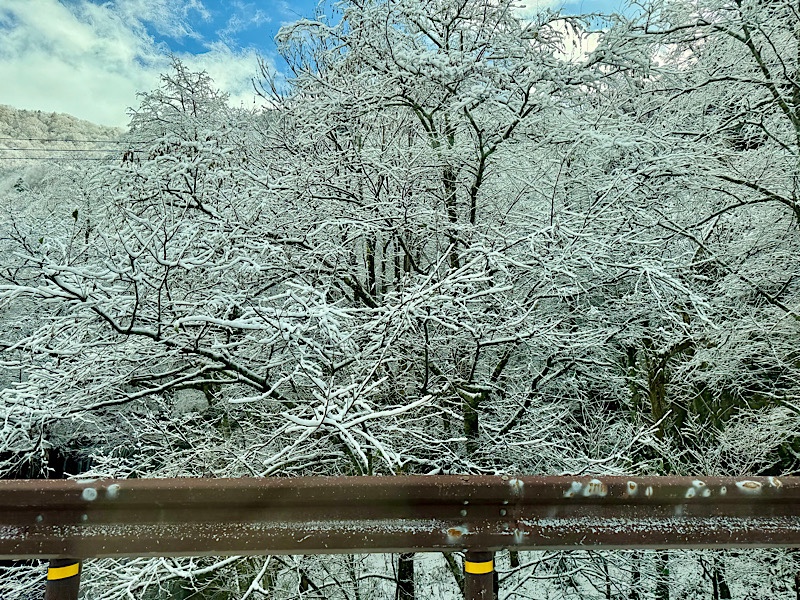 We stopped at a Okuhida Onsengo Kamitakara restop which had these weasels everywhere as a mascot – and we expected to find it full of weird Japanese weasel mascots and of course, fried chicken… instead we found :
We stopped at a Okuhida Onsengo Kamitakara restop which had these weasels everywhere as a mascot – and we expected to find it full of weird Japanese weasel mascots and of course, fried chicken… instead we found : 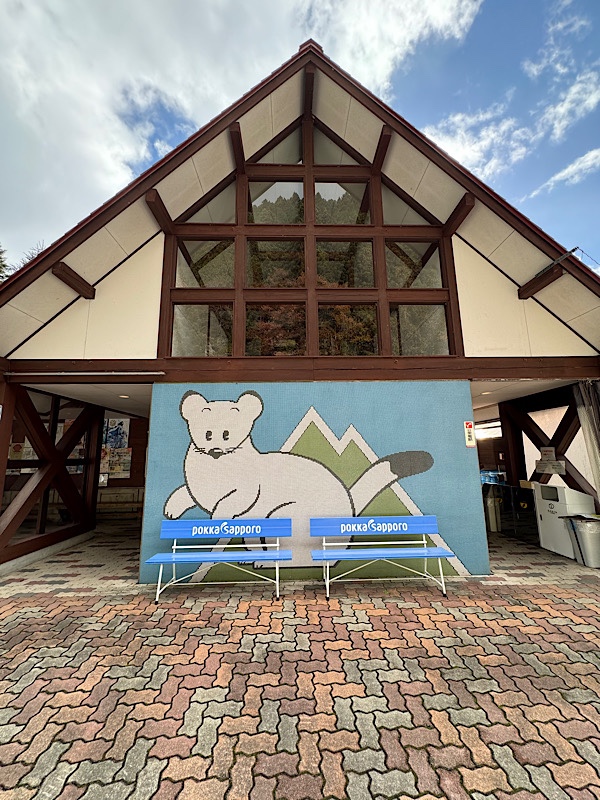
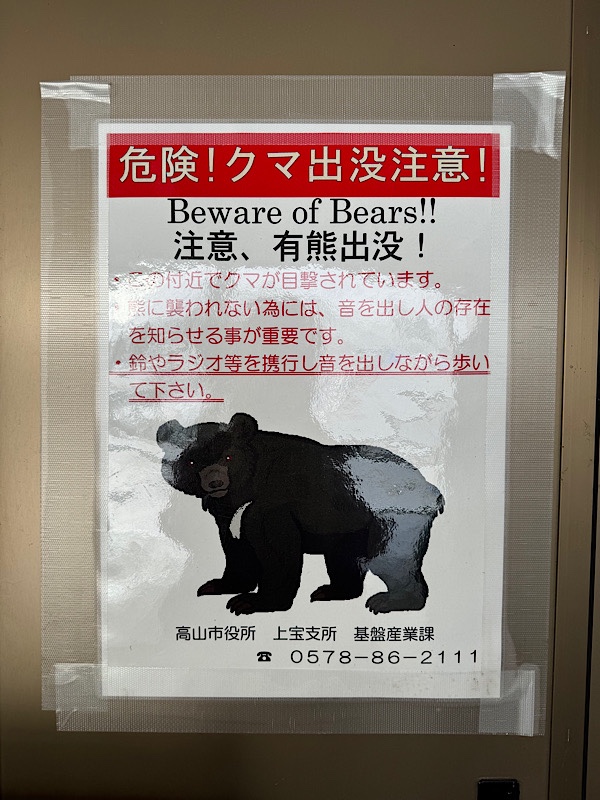
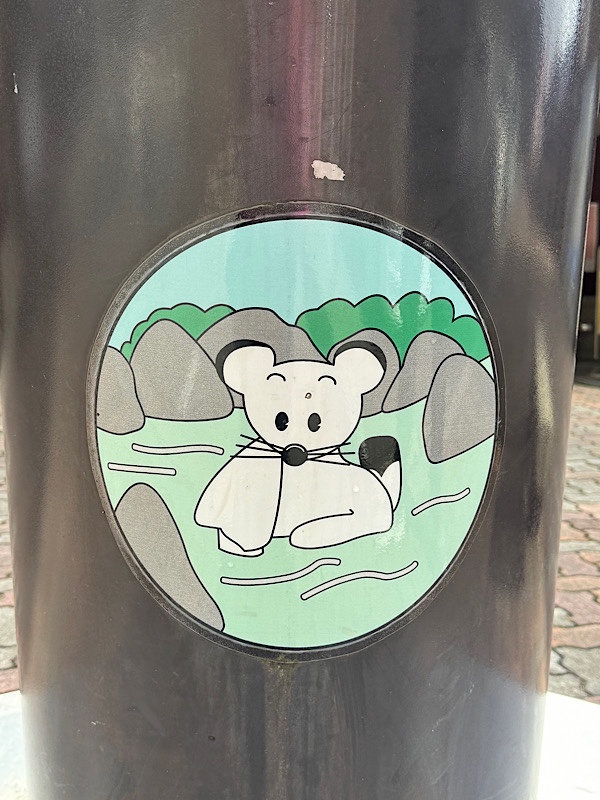
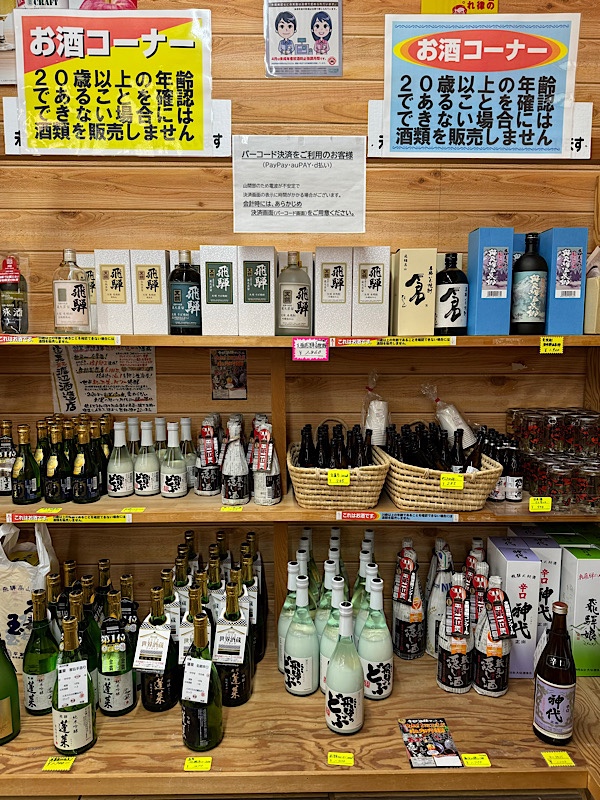 As quickly as we entered into the snowy altitudes we were returned to the autumnal glacial alluvial valleys again.
As quickly as we entered into the snowy altitudes we were returned to the autumnal glacial alluvial valleys again. 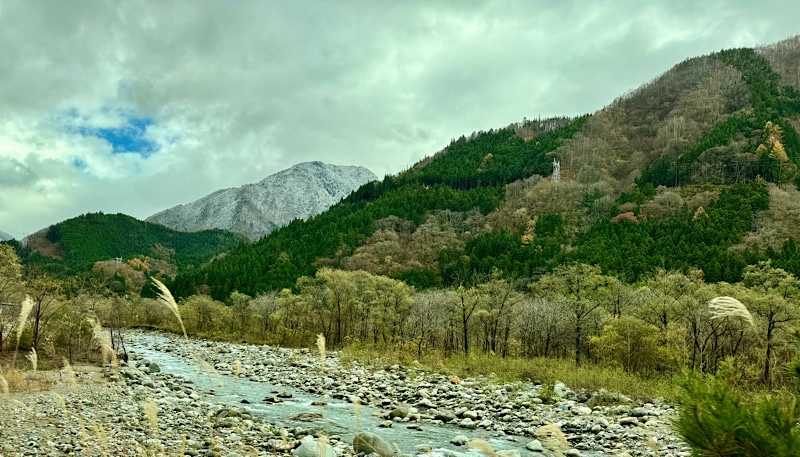 We eventually made our way to the Dormy Inn in Toyama City – which I guess is like an American Holiday Inn or an Australian Rydges… there wasn’t much happening here by the time we arrived quite late in the day, but we did find an nice izakaya open and managed to have a nice fishy dinner. Below: miso crap, sashimi plate (salmon, snapper and yellowtail) and some sea cucumber).
We eventually made our way to the Dormy Inn in Toyama City – which I guess is like an American Holiday Inn or an Australian Rydges… there wasn’t much happening here by the time we arrived quite late in the day, but we did find an nice izakaya open and managed to have a nice fishy dinner. Below: miso crap, sashimi plate (salmon, snapper and yellowtail) and some sea cucumber). 